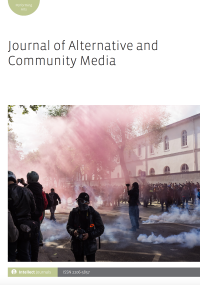-
oa Tribal radio stations as key community informants and sites of resistance to mainstream media narratives
-
View Affiliations Hide Affiliations
- Source: Journal of Alternative & Community Media, Volume 4, Issue 3, Oct 2019, p. 43 - 55
-
- 01 Oct 2019
Abstract
Rural US Indigenous communities are disproportionately affected by digital divides, insufficient infrastructures, and health disparities, so that community radio still represents a key medium in the lean mediascapes of these communities. The first US radio stations licensed to American Indian/Alaska Native tribes began broadcasting in 1971, about 50 years after the rise of rural radio in the US, which until then had almost entirely ignored Indigenous news, concerns, and voices. This paper draws on interview data from 2016 fieldwork conducted in Alaska and Arizona with two community radio stations serving the local, mostly Indigenous audience, to highlight how its historical ties to social activism continue to play a role in how tribal radio functions as a medium today. Tribal radio stations value not only traditional journalistic standards, but also advocacy for the community, combating stereotypes, and view themselves as distinct from mainstream and other community media.


